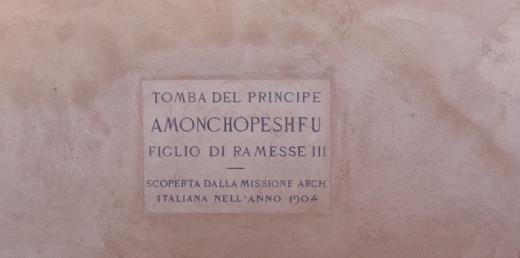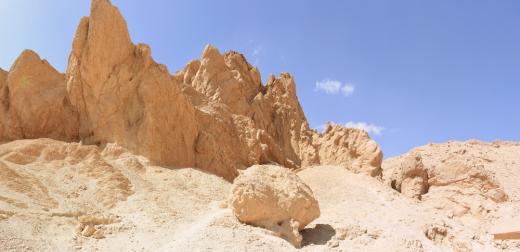QV 3
Anonymous*
About
About
QV 3 is located on the south side of the main visitor path. It consists of a rough, vertical shaft leading to a poorly formed chamber. The chamber has poorly defined floors and walls. There is a small connection through the rear of the chamber to QV 81. The owner of the tomb is unknown.
At the time of Elizabeth Thomas' inspection, she noted that QV 3 held a horned bovine skull and potsherds. She also noted interconnections between tombs QV 3, QV 5, and QV 6, although she was unsure whether these were made intentionally during original construction or were created at some later date. These connections are no longer visible. The tomb was last cleared in 1984-85 by the Franco-Egyptian Mission and dated to the 18th Dynasty.
Site History
The tomb was constructed in the 18th Dynasty.
Dating
This site was used during the following period(s):
Exploration
Conservation
Conservation History
As of December 2009, the SCA installed a masonry surround and metal grill over the entrance of the tomb.
Site Condition
According to the GCI-SCA, the tomb shaft and chamber ceiling appear stable, though the walls are weak and continue to collapse. Cracked, dried mud is present on the floor and ceiling, indicative of flooding in the past (i.e., the 1994 flood). Dried mud in QV 81 further appears to indicate that flooding passed from QV 3 into QV 81. The inherently weak rock of QV 3, as well as past flooding have likely contributed to the deterioration of its chambers. According to the GCI-SCA, QV 3 continues to be at high risk of continued flooding due to its position next to the main drainage channel of the Wadi.



Articles
Tomb Numbering Systems in the Valley of the Queens and the Western Wadis
Geography and Geology of the Valley of the Queens and Western Wadis
Bibliography
Aston, D.A. The Theban West Bank from the Twenty-fifth Dynasty to the Ptolemaic Period. In: Nigel Strudwick, and John H. Taylor (Eds.). The Theban Necropolis: Past, Present and Future. London: British Museum, 2003: 138- 63.
Aston, David. Burial Assemblages of Dynasty 21-25. Chronology – Typology – Developments. Denkschriften der Gesamtakademie 54 = Contributions to the Chronology of the Eastern Mediterranean 21. Wien: Verlag der Österreichischen Akademie der Wissenschaften, 2009.
Demas, Martha and Neville Agnew (eds). Valley of the Queens. Assessment Report. Los Angeles: The Getty Conservation Institute, 2012, 2016. Two vols.
Thomas, Elizabeth. The Royal Necropoleis of Thebes. Princeton: privately printed, 1966.





